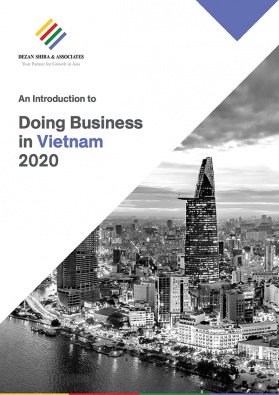EVIPA: Investment Protection for EU, Vietnam Businesses
- The European Parliament on February 12 ratified the EU-Vietnam Free Trade Agreement (EVFTA) as well as the EU-Vietnam Investment Protection Agreement (EVIPA).
- The EVIPA is still subject to EU member ratification procedures and will likely enter force after the EVFTA is implemented.
- The EVIPA aims to protect investors and investments in the EU and Vietnam and ensures they will be given fair treatment.
The European Parliament on February 12 ratified the EU-Vietnam Free Trade Agreement (EVFTA). On the same day, the EU-Vietnam Investment Protection Agreement (EVIPA) was also approved marking a historic step in Vietnam-EU trade relations.
The EVIPA will still require EU member ratification procedures and will likely enter force after the EVFTA comes into effect.
Protecting investors
An Investment Protection Agreement (IPA), part of a free trade agreement (FTA), is an agreement between two or more countries, which aims to protect investors and investments in a host country. It ensures that they will be accorded fair treatment and will not be discriminated against.
Usually, when there is a dispute between an investor and a host country, investors can reach out to the World Banks’s International Centre for Settlement of Investment Disputes (ICSID) or other similar tribunals permitted under their respective FTA for resolution.
In the case of EVFTA, both parties have agreed to set up a permanent court, referred to as the “Tribunal” to handle such issues. This will not only protect investors and their investments but also protect a country’s right to oversee the implementation of public policies. In addition, the court system will be an independent dispute resolution system.
EU Vietnam tribunal system
Under the EVFTA, a permanent dispute resolution system will be set up that will handle disputes related to the investment protection provisions in the FTA, such as protection against expropriation without compensation.
Domestic courts will not be allowed to intervene or question the decision of the tribunals to ensure transparency and fair treatment.
Members
According to the EVFTA, the tribunal will comprise of nine members. The EU and Vietnam will each appoint three members, while the remaining three members will be appointed from a third country.
Court hearing process
All cases will be heard by a three-member team from the tribunal, with the EU, Vietnam, and a third country represented equally. The three members will be selected by the President of the Tribunal, with one condition that the chair of the group belongs to the third country, and not the EU or Vietnam.
Appeals
According to the EVFTA, a claimant can appeal the decision of the tribunal to a permanent appeal tribunal within 90 days under numerous grounds such as errors of law, errors of fact, and procedural unfairness of the tribunal’s decision.
If not appealed within 90 days, the decision of the tribunal will be deemed as final. The appeal tribunal will consist of six members, two each from the EU and Vietnam, and remaining two from a third country.
Alternative dispute resolution
Before reaching out to the tribunal, a claimant can request for a consultation or mediation. Consultations will be held either in Hanoi, Brussels, or the capital of a member state of the EU concerned. It can also be conducted through video conference or in any other location, as agreed upon by the involved parties.
In the case of mediation, a mediator is appointed by agreement of the disputing parties and can be a member of the tribunal.
If a dispute claim is not settled within 90 days of the submission of the request for consultations, a claimant can send a notice of intent to submit a claim. If a dispute is still not resolved within three months from the submission of the notice of intent to submit a claim or 6 months from the submission of the request for consultations, they can forward their claim to the tribunal.
However, a claimant cannot submit a claim to the tribunal in case the claim is already pending before any other domestic or international tribunal or court.
Trademarks
The EVFTA has introduced the international standard of ‘genuine use’ which has been absent from Vietnam’s IP laws. The ‘genuine use’ standards state that a trademark is used (real or actual) within the five-year period after registration and is liable to termination if not used within that time period. Vietnamese law at the moment is vague on this, though authorities are expected to issue further guidelines on ‘genuine use’ of a trademark.
The EVFTA also states that a trademark can be the subject of termination if after registering, the trademark becomes inactive and subsequently common or generic.
Geographical indications
As per the World Intellectual Property Organization (WIPO), Geographical Indication (GI) is a sign used on products that have a specific geographical origin and possess qualities or reputation that are due to that origin. To function as a GI, a sign must identify a product as originating in a given place, thus giving a clear link between the product and its original place of production. Under the EVFTA, Vietnam will protect more than 169 GIs, while the EU will protect 39 of Vietnam’s without having to go through the registration process. The agreement also allows some GIs such as ‘Gorgonzola’ and ‘Champagne’ in Vietnam as long as there is actual commercial use.
Patents
As per the EVFTA, parties will develop patent registration procedures using the Patent Law Treaty (PLT) as a reference. In addition, both countries will compensate patent owners for delays in authorization.
Design
Vietnam has implemented the Hague Agreement on international registration of designs, which will protect designs for at least 15 years. In addition, Vietnam will also protect partial designs as per the current – whole design. For complex products, only designs of the visible component of the product are protected under the EVFTA.
Takeaways
Vietnam is the EU’s second largest trading partner in ASEAN, surpassing regional rivals Indonesia and Thailand in recent years.
The trade agreement, which both parties aim to bring into effect by 2020, will eliminate over 99 percent of the tariffs. As per the Ministry of Planning and Investment, the FTA is expected to help increase Vietnam’s GDP by 4.6 percent and its exports to the EU by 42.7 percent by 2025. While the European Commission has forecast the EU’s GDP to increase by US$29.5 billion by 2035.
As COVID-19 weakens global demand, Vietnam businesses are eyeing EU exports with the EVFTA gaining greater significance. With exports to China experiencing less demand – a large market for Vietnam, the EVFTA can allow for significant opportunities for Vietnam businesses.
However, with the EU on lockdown, Vietnam is keeping a close watch on developments and the impact on trade. Even during the pandemic, Vietnam has continued to maintain a strong bilateral relationship with EU countries while it manages the pandemic at home.
Note: This article was first published in August 2018 and has been updated to include the latest developments.
About Us
Vietnam Briefing is produced by Dezan Shira & Associates. The firm assists foreign investors throughout Asia from offices across the world, including in Hanoi and Ho Chi Minh City. Readers may write to vietnam@dezshira.com for more support on doing business in Vietnam.
- Previous Article How Vietnam Contained COVID-19 and Why its Economy Will Rebound
- Next Article Quang Ninh and Guangdong – Choosing your China+1 Location







